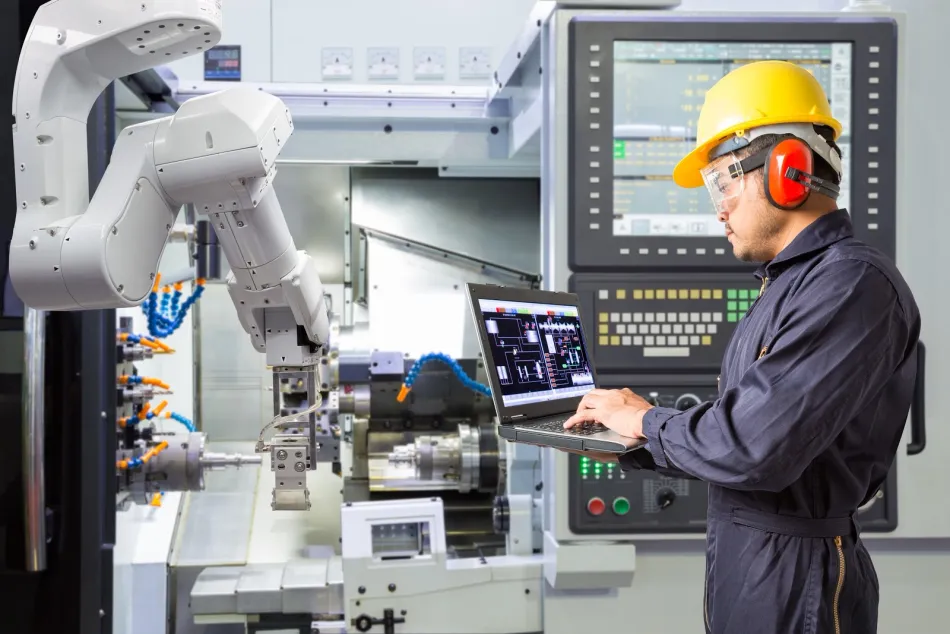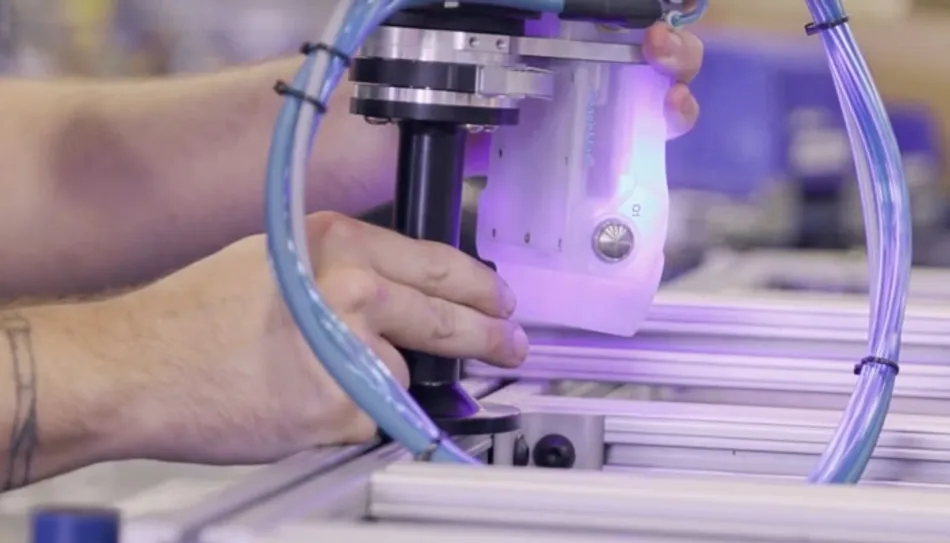Solving the Skilled Labor Shortage with Automation
Many manufacturers are struggling to find skilled labor for their manufacturing plants? According to the Society of Manufacturing Engineers, 89% of manufacturers are having difficulty finding skilled workers in the United States today.

How industrial robots can help address the growing labor shortage in manufacturing
Many manufacturers are struggling to find skilled labor for their manufacturing plants? According to the Society of Manufacturing Engineers, 89% of manufacturers are having difficulty finding skilled workers in the United States today. Moreover, a 2018 study by Deloitte and the Manufacturing Institute projected that 2.4 million US manufacturing jobs will go unfilled from 2018-2028 due to the lack of skilled talent1. The same study notes that manufacturers who are searching for skilled talent like robot programmers, operations managers, and production managers, expect the skilled labor gap to worsen over the next three years, as the aging baby boomer workforce retires and younger workers decline to enter the manufacturing field.
Not only is the skilled labor shortage impacting businesses’ ability to hire, but it’s also stunting businesses’ ability to grow and meet production demands. Manufacturers across industries today are having to turn away new business as a result of not having adequate labor resources. According to a 2018 study by Korn Ferry, the labor skills gap in the global manufacturing industry could result in more than $607 billion in lost revenue by 2030. In this scenario, the U.S. alone would experience a total of $73 billion in unrealized output.
What can be done to address the widening skilled labor gap?
One effective solution is to implement robotic automation for repetitive tasks. While there were initial fears that industrial robots would replace human jobs, the reality is that industrial robots are actually helping manufacturers to supplement the low-skilled, repetitive jobs that are otherwise going completely unfilled. According to Deloitte’s 2018 Global Human Capital Trends report, 47% of manufacturers are already supplementing their current workforce with automation, with 24% using AI and robotics to perform routine tasks and 16% using automation to augment human skills.

Robotic automation is also helping manufacturers to refocus existing skilled workers on higher-level tasks that require human-only skills. With automation, seasoned human workers are empowered to use their intrinsic knowledge of production best practices to help the manufacturing plant well beyond repetitive or tedious tasks. Refocusing skilled workers on more strategic tasks can create critical competitive advantages for manufacturers, especially as all competitors worldwide struggle to find and retain talent. Additionally, research from the Word Economic Forum reveals that increasing robotic automation actually helps to reshore low-skill production jobs from abroad, which in turn helps to increase employment and wages for high-skilled workers.
Automation doesn’t just stop at helping fill open manufacturing jobs. Using industrial robots for tasks that were previously strenuous, or even dangerous, for humans can result in a safer factory environment for all workers. This is especially true for the automotive and electronics industries, where humans were at higher risk for workplace injuries pre-automation; industrial robots in these industries have diverse arrays of computer-vision sensors that help detect when human body parts, like fingers or hands, are in the way of a task being completed. Some industrial robots also have deep machine learning capabilities via artificial intelligence that further help them to learn tasks on the job without pre-programming, all while ensuring that production efforts are being completed in accordance with the highest safety standards.
New technologies are enabling automation
Advances in industrial automation software are also helping to aid the skilled labor shortage. In the past, manufacturers that purchased industrial robots needed to hire teams of engineer-level programmers to take weeks or months to code the new machines. There are over 30 different manufacturers of industrial robots, each with their own unique programming language, meaning that the highly-skilled programmers needed to know how to program the specific industrial robot that was purchased. While these skill requirements made it very difficult in the past for manufacturers to deploy and redeploy robots as quickly as needed, there are now new solutions in automation that make it possible to launch robots without relying on hard-to-find programmers. For example, at READY Robotics, our Forge/OS software makes it possible for any factory worker to program any robot in minutes via a user-friendly, visual touchscreen – no coding required. This means that businesses can now rely on existing factory workers to complete the work of rare, high-skilled programmers, which is both more time-efficient and cost-effective.

Human-machine pairing that is enabled by collaborative robots (cobots) will also be helpful for factories that need to maximize their existing human workforce alongside robots. Similar to industrial robots, cobots can also aid with dangerous and repetitive tasks, improve product quality and consistency, and increase overall productivity. A major benefit of cobots over industrial robots is that they allow robots to work within the same factory space as humans, with minimal safety concerns. In some cases, new product designs can be deployed up to 50% faster with cobots than industrial robots, particularly since they often use human-machine interfaces (HMI). By removing the need to have formal robotics or programming experience, HMIs help to address the skilled labor shortage by making it easier and quicker for all workers to learn how to use cobots.
As the labor shortage situation in the U.S. manufacturing industry continues to unfold in the coming decade, manufacturers should continue to plan ways that they can meet production demands without the availability of highly skilled labor. Though industrial automation cannot fill all roles left empty by the skilled labor shortage, it can help manufacturers to directly address the areas of production that are most repetitive and easiest to complete by robots. It is uplifting to see how automation worldwide is already helping to supplant, and not replace, human workforces. Robotic automation is transforming the factory of the future, where not only is production more efficient, but the available human workforce also benefits from higher-level tasks and safer work environments. It’s evident that by working through the implementation of automation, while also empowering factory workers, manufacturers will be in the best position themselves to be successful in the future.